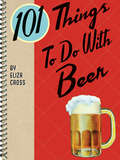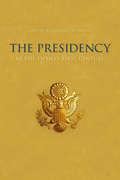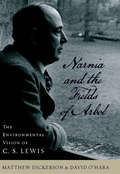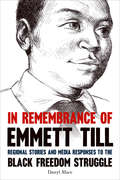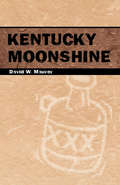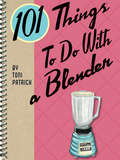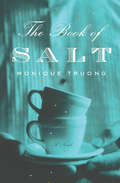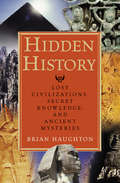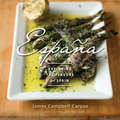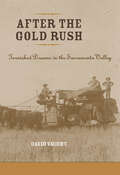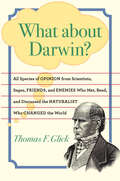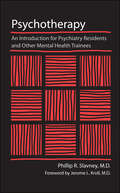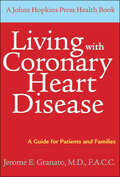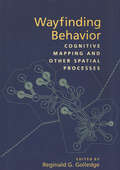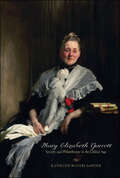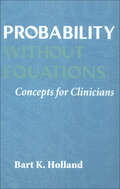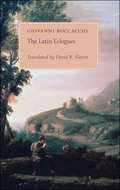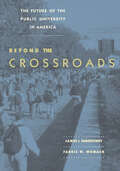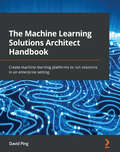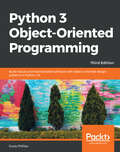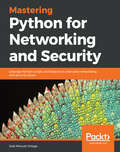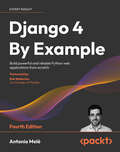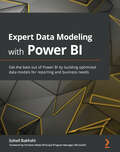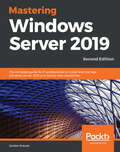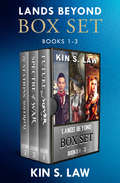- Table View
- List View
101 Things To Do With Beer (101 Things To Do With)
by Eliza CrossRecipes that are good for what ales you—part of the million-selling cookbook series! Take your love of the suds to the next level by infusing your favorite libation into breakfast, lunch, and dinner with 101 Things To Do With Beer. Home cooks can depend on 101 Things to Do with Beer's wide range of creative recipes and affordable price to add some &“hop&” to every meal. Give each dish the boost of flavor it deserves: from Beer Battered Apple Fritters to Beer Simmered Chicken Tacos; Garlic Parmesan Onion Rings to Chocolate Stout Ice Cream, you&’ll satisfy even the most skeptical guest. Raise your plate and say &“Cheers!&”
The Presidency in the Twenty-First Century
by Charles W. DunnThese essays by political scientists provide &“an effective snapshot of where the presidency appears to be heading in the 21st century . . . thoughtful insights&” (Choice Magazine). The US president is under constant scrutiny from both colleagues and the American people. Questions about the proper role of the president have been especially prevalent in recent decades. This book explores the growth of presidential power, investigating its social, political, and economic impact on America&’s present and future. Editor Charles W. Dunn and a team of the nation&’s leading political scientists examine a variety of topics, from the link between campaigning and governing to trends in presidential communication with the public. The book discusses the role of the presidency in a government designed to require cooperation with Congress, and how this relationship is further complicated by the expectations of the public. Several contributors take a closer look at the Obama administration in light of President George W. Bush&’s emphasis on the unitary executive, a governing style that continues to be highly controversial. Dunn and his contributors provide a thorough analysis of a rapidly changing political role—provoking important questions about the future of America&’s political system.
Narnia and the Fields of Arbol: The Environmental Vision of C.S. Lewis (Culture of the Land #Cull)
by Matthew Dickerson David O'HaraAn exploration of the Chronicles of Narnia and the Space Trilogy that &“enriches our understanding of how to care for our world&” (Alan Jacobs, author of Breaking Bread with the Dead). In Narnia and the Fields of Arbol: The Environmental Vision of C. S. Lewis, authors Matthew Dickerson and David O&’Hara illuminate an important yet overlooked aspect of the author&’s visionary work. They go beyond traditional theological discussions of Lewis&’s writing to investigate themes of sustainability, stewardship of natural resources, and humanity&’s relationship to wilderness. The authors examine the environmental and ecological underpinnings of Lewis&’s work by exploring his best-known works of fantasy, including the seven books of the Chronicles of Narnia and the three novels collectively referred to as the Space Trilogy. Taken together, these works reveal Lewis&’s enduring environmental concerns, and Dickerson and O&’Hara offer a new understanding of his pioneering style of fiction. Narnia and the Fields of Arbol, the first book-length work on the subject, finds the author&’s legacy to have as much in common with the agrarian environmentalism of Wendell Berry as it does with the fantasy of J. R. R. Tolkien. In an era of increasing concern about deforestation, climate change, and other environmental issues, Lewis&’s work remains as pertinent as ever. The widespread adaption of his work in film lends credence to the author&’s staying power as an influential voice in both fantastical fiction and environmental literature. With Narnia and the Fields of Arbol, Dickerson and O'Hara have written a timely work of scholarship that offers a fresh perspective on one of the most celebrated authors in literary history. &“Both revelatory and a pleasure to read.&” —Robert Siegel, award-winning author of The Whalesong Trilogy
In Remembrance of Emmett Till: Regional Stories and Media Responses to the Black Freedom Struggle (Civil Rights and the Struggle for Black Equality in the Twentieth Century)
by Darryl MaceThis provocative study explores how media coverage of Emmett Till&’s murder influences regional reactions and reignited the Civil Rights movement.On August 28, 1955, fourteen-year-old Chicago native Emmett Till was brutally beaten to death for allegedly flirting with a white woman at a grocery store in Money, Mississippi. Roy Bryant and J. W. Milam were acquitted of Till&’s murder—then admitted to the crime in an interview with the national media. They were never convicted.Although Till's body was mutilated, his mother ordered that his casket remain open so that the country could observe the results of racially motivated violence in the Deep South. Media attention fanned the flames of regional tension and impelled many individuals—including Rosa Parks—to become vocal activists for racial equality.In this innovative study, Darryl Mace explores media coverage of Till's murder and analyses its influence on the regional and racial perspectives. He investigates the portrayal of the trial in popular and black newspapers across the South, documents posttrial reactions, and examines Till's memorialization in the press to highlight the media's role in shaping opinions.
Kentucky Moonshine
by David W. MaurerA concise, lively history of how the Bluegrass State became famous for illicit distilleries, by the author of The Big Con. When the first American tax on distilled spirits was established in 1791, violence broke out in Pennsylvania. The resulting Whiskey Rebellion sent hundreds of families down the Ohio River by flatboat, stills on board, to settle anew in the fertile bottomlands of Kentucky. Once there, they used cold limestone spring water to make bourbon and found that corn produced even better yields of whiskey than rye. Thus, the licit and illicit branches of the distilling industry grew up side by side in the state. This is the story of the illicit side—the moonshiners&’ craft and craftsmanship, as practiced in Kentucky. This entertaining, deeply researched slice of history also includes a glossary of moonshiner argot, shedding light on such colorful terms as puker, slop, and weed-monkey.
101 Things To Do With a Blender (101 Things To Do With)
by Toni PatrickDo more with your blender using these tasty recipes for soups, smoothies, breakfasts, desserts, and more! This convenient little appliance is found in almost every kitchen and has so many uses. With 101 Things to Do with a Blender, you can make lip-smacking dips and spreads, hearty soups, easy breakfasts, quick dinners, luscious desserts, savory sauces and dressings, plus delightful smoothies and shakes. Try these mouthwatering recipes: Buttermilk Pancakes * Almond Feta Cheese Spread * Beefy Vegetable Soup * Green Pepper Meatballs * Chocolate Mousse * Strawberry Ice Cream * and a whole lot more!
The Book of Salt: A Novel
by Monique TruongA novel of Paris in the 1930s from the eyes of the Vietnamese cook employed by Gertrude Stein and Alice B. Toklas, by the author of The Sweetest Fruits.Viewing his famous mesdames and their entourage from the kitchen of their rue de Fleurus home, Binh observes their domestic entanglements while seeking his own place in the world. In a mesmerizing tale of yearning and betrayal, Monique Truong explores Paris from the salons of its artists to the dark nightlife of its outsiders and exiles. She takes us back to Binh's youthful servitude in Saigon under colonial rule, to his life as a galley hand at sea, to his brief, fateful encounters in Paris with Paul Robeson and the young Ho Chi Minh.Winner of the New York Public Library Young Lions Fiction Award A Best Book of the Year: New York Times, Village Voice, Seattle Times, Miami Herald, San Jose Mercury News, and others&“An irresistible, scrupulously engineered confection that weaves together history, art, and human nature…a veritable feast.&”—Los Angeles Times &“A debut novel of pungent sensuousness and intricate, inspired imagination…a marvelous tale.&”—Elle&“Addictive…Deliciously written…Both eloquent and original.&”—Entertainment Weekly&“A mesmerizing narrative voice, an insider's view of a fabled literary household and the slow revelation of heartbreaking secrets contribute to the visceral impact of this first novel.&”—Publishers Weekly, starred review
Hidden History: Lost Civilizations, Secret Knowledge, and Ancient Mysteries
by Brian HaughtonAn archaeologist explores history&’s most fascinating enigmas, from the ancient Druids to the mysteries of the Mayan calendar and the lost city of Atlantis. Across thousands of years of history, so-called lost civilizations still speak to us through their artifacts and architecture. In Hidden History, archaeologist Brian Haughton fills the gap between archaeology and alternative history using the latest available data and a common sense, open-minded approach. Divided into three sections, this expertly researched volume shares the secrets of Mysterious Places, Unexplained Artifacts, and Enigmatic People. Haughton introduces readers to the greatest mysteries of the ancient world, from the labyrinthine palace of Knossos on Crete to the pyramids of Egypt, the remote jungle temples of Peru, and the megalithic mystery of Stonehenge. But he also goes further to explore historical puzzles like the Coso Artifact, the possibility of ancient flight, and the Voynich Manuscript, as well as mysterious peoples from the Magi and the Druids to the Knights Templar and the Green Children. With more than 50 photographs and illustrations, this is the ideal reference work for those interested in the archaeology of these great enigmas.
España: Exploring the Flavors of Spain
by James Campbell CarusoFrom tapas to main dishes and desserts, &“one of New Mexico&’s culinary treasures&” captures the layers of flavors and hidden nuances of Spanish cuisine (Farm & Table). The James Beard Award-nominated chef and owner of Santa Fe&’s La Boca restaurant is renowned for offering &“modern re-inventions of classic Spanish cuisine&” (The New York Times). Now, in España, he gives readers a journal of recipes that are a result of his flavor explorations, his trademark blending of the traditional and the innovative. Including the chef&’s guide to classic Spanish ingredients, this beautifully photographed collection includes tapas (small bites) of meat, seafood and vegetables; scrumptious soups; hearty main dishes; and delectable desserts, all using fresh produce, the finest cheeses and meats, and special spices. Recipes such as Rolled Pasta with Scallops and Crab; Red Pepper Stew; Shrimp and Chorizo Paella; Slow-Braised Lamb Shanks with Lemon, Cumin, and Cinnamon; and Coffee Custard will immerse you in the heart of Caruso&’s unforgettable Spanish cuisine.
After the Gold Rush: Tarnished Dreams in the Sacramento Valley
by David Vaught2008 Winner of the Albert J. Beveridge Award of the American Historical Association"It is a glorious country," exclaimed Stephen J. Field, the future U.S. Supreme Court justice, upon arriving in California in 1849. Field's pronouncement was more than just an expression of exuberance. For an electrifying moment, he and another 100,000 hopeful gold miners found themselves face-to-face with something commensurate to their capacity to dream. Most failed to hit pay dirt in gold. Thereafter, one illustrative group of them struggled to make a living in wheat, livestock, and fruit along Putah Creek in the lower Sacramento Valley. Like Field, they never forgot that first "glorious" moment in California when anything seemed possible. In After the Gold Rush, David Vaught examines the hard-luck miners-turned-farmers—the Pierces, Greenes, Montgomerys, Careys, and others—who refused to admit a second failure, faced flood and drought, endured monumental disputes and confusion over land policy, and struggled to come to grips with the vagaries of local, national, and world markets.Their dramatic story exposes the underside of the American dream and the haunting consequences of trying to strike it rich.
What about Darwin?: All Species of Opinion from Scientists, Sages, Friends, and Enemies Who Met, Read, and Discussed the Naturalist Who Changed the World
by Thomas F. Glick2010 Outstanding Academic Title, Choice MagazineCharles Darwin and his revolutionary ideas inspired pundits the world over to put pen to paper. In this unique dictionary of quotations, Darwin scholar Thomas Glick presents fascinating observations about Darwin and his ideas from such notable figures as P. T. Barnum, Anton Chekhov, Mahatma Gandhi, Carl Jung, Martin Luther King, Mao Tse-tung, Pius IX, Jules Verne, and Virginia Woolf. What was it about Darwin that generated such widespread interest? His Origin of Species changed the world. Naturalists, clerics, politicians, novelists, poets, musicians, economists, and philosophers alike could not help but engage his theory of evolution. Whatever their view of his theory, however, those who met Darwin were unfailingly charmed by his modesty, kindness, honesty, and seriousness of purpose. This diverse collection drawn from essays, letters, novels, short stories, plays, poetry, speeches, and parodies demonstrates how Darwin’s ideas permeated all areas of thought. The quotations trace a broad conversation about Darwin across great distances of time and space, revealing his profound influence on the great thinkers of the nineteenth and twentieth centuries.
Psychotherapy: An Introduction for Psychiatry Residents and Other Mental Health Trainees
by Phillip R. SlavneyMany psychiatry residents and other mental health trainees begin their careers as psychotherapists with a mixture of enthusiasm and apprehension: enthusiasm at the prospect of using only words and actions to help someone in distress; apprehension about whether they are capable of doing it. In his latest book, Phillip R. Slavney helps these students get started by discussing such fundamental issues as what makes psychotherapy work, what is important in a psychotherapeutic relationship, and whether psychotherapists should have their own psychotherapy. Slavney draws on his long experience as a psychotherapist and teacher of psychotherapy in a confidence-building book that is both practical and scholarly.
Living with Coronary Heart Disease: A Guide for Patients and Families (A Johns Hopkins Press Health Book)
by Jerome E. GranatoCoronary heart disease kills more people in the United States than any other heart disorder, and it is the leading cause of death among American women. Jerome E. Granato, a distinguished cardiologist with more than twenty-five years of experience, has created an authoritative and accessible guide to this common condition, providing patients and their families with insight and advice. Dr. Granato begins by describing the basic science of the disease, known also as atherosclerosis, in which arteries become clogged and damaged. He then explains who is at risk and how the disease is detected and diagnosed. He covers all the treatment options, from medications to surgery, and answers such questions as: • How do I know if I have coronary heart disease?• What is a heart attack?• Does my condition need to be treated with surgery?• What are the benefits and risks of balloon angioplasty?• What are stents and how do they work?• How can I manage my condition for the future?He addresses the needs of specific populations, and concludes by discussing how a healthy diet and regular exercise can influence health before and after treatment and how it can help prevent disease. Even after coronary heart disease is diagnosed, its course can be modified. This valuable resource will help patients and their families make some of the most important health care decisions they will ever face.
Wayfinding Behavior: Cognitive Mapping and Other Spatial Processes
by Reginald G. GolledgeThe metaphor of a "cognitive map"has attracted wide interest since it was first proposed in the late 1940s. Researchers from fields as diverse as psychology, geography, and urban planning have explored how humans process and use spatial information, often with the view of explaining why people make wayfinding errors or what makes one person a better navigator than another. Cognitive psychologists have broken navigation down into its component steps and shown it to be an interplay of neurocognitive functions, such as "spatial updating"and "reference frames"or "perception-action couplings."But there has also been an intense debate among biologists over whether animals have cognitive maps or have other forms of internal spatial representations that allow them to behave as if they did. Yet until now, little has been done to relate research on human and non-human subjects in this area.In Wayfinding Behavior: Cognitive Mapping and Other Spatial Processes Reginald Golledge brings together a distinguished group of scholars to offer a unique and comprehensive survey of current research in these diverse fields. Among the common themes they discover is the psychologists' "black box"approach, in which the internal mechanisms of spatial perception and route planning are modeled or constructed, like metaphors, based on the behavioral evidence. Cognitive neuroscientists, on the other hand, have attempted to discover the neurocognitive basis for spatial behavior. (They have shown, for example, that damage in the hippocampus system invariably impairs the ability of animals and humans to learn about, remember, and navigate through environments, and studies in humans show that neurons in this system code for location, direction, and distance, thereby providing the elements needed for a mapping system.) Artificial intelligence and robotics theorists attempt to construct intelligent mapping systems using computer technology. In these areas, there is growing evidence that, as in human wayfinding processes, useful representations cannot be achieved without sacrificing completeness and precision.Wayfinding Behavior: Cognitive Mapping and Other Spatial Processes offers not only state-of-the-art knowledge about "wayfinding, "but also represents a point of departure for future interdisciplinary studies. "The more we know," concludes volume editor Reginald Golledge, "about how humans or other species can navigate, wayfind, sense, record and use spatial information, the more effective will be the building of future guidance systems, and the more natural it will be for human beings to understand and control those systems."
Mary Elizabeth Garrett: Society and Philanthropy in the Gilded Age
by Kathleen Waters SanderA captivating look at the remarkable life of this nineteenth-century suffragist, philanthropist, and reformer.Mary Elizabeth Garrett was one of the most influential philanthropists and women activists of the Gilded Age. With Mary's legacy all but forgotten, Kathleen Waters Sander recounts in impressive detail the life and times of this remarkable woman, through the turbulent years of the Civil War to the early twentieth century. At once a captivating biography of Garrett and an epic account of the rise of commerce, railroading, and women's rights, Sander's work reexamines the great social and political movements of the age.As the youngest child and only daughter of the B&O Railroad mogul John Work Garrett, Mary was bright and capable, well suited to become her father's heir apparent. But social convention prohibited her from following in his footsteps, a source of great frustration for the brilliant and strong-willed woman. Mary turned her attention instead to promoting women's rights, using her status and massive wealth to advance her uncompromising vision for women's place in the expanding United States. She contributed the endowment to establish the Johns Hopkins School of Medicine with two unprecedented conditions: that women be admitted on the same terms as men and that the school be graduate level, thereby forcing revolutionary policy changes at the male-run institution. Believing that advanced education was the key to women's betterment, she helped found and sustain the prestigious girls' preparatory school in Baltimore, the Bryn Mawr School. Her philanthropic gifts to Bryn Mawr College helped transform the modest Quaker school into a renowned women's college. Mary was also a great supporter of women's suffrage, working tirelessly to gain equal rights for women.Suffragist, friend of charitable causes, and champion of women's education, Mary Elizabeth Garrett both improved the status of women and ushered in modern standards of American medicine and philanthropy. Sander's thoughtful and informed study of this pioneering philanthropist is the first to recognize Garrett and her monumental contributions to equality in America.
Probability without Equations: Concepts for Clinicians
by Bart K. HollandAn award-winning teacher gives a non-technical explanation of the probability and statistics needed by physicians to interpret laboratory results.Although few physicians, nurses, dentists, and other health professionals perform laboratory tests themselves, they all need to be able to interpret the results as well as understand findings reported in the medical literature. A general understanding of probability and statistics is essential for those needing to make daily decisions about the significance of research data, drug interaction precautions, or a patient's positive laboratory test for a rare disease.Written with these needs in mind, Probability without Equations offers a thorough explanation of the subject without overwhelming the reader with equations and footnotes. Award-winning teacher Bart Holland presents a nontechnical treatment of intuitive concepts and presents numerous examples from medical research and practice. In plain language, this book explains the topics that clinicians need to understand:• Analysis of variance• "P-values" and the "t-test"• Hazard models• Regression and correlations• Alpha and beta errors"The Nobel prize-winning physicist Ernest Rutherford was fond of saying that if you need statistics to analyze the results of an experiment, you don't have a very good experiment. In a way he was right. However, a recurrent problem in medicine is that in a certain sense you commonly don't have a good experiment—but not because medical research scientists are generally incompetent! The nature of the data they work with is simply not as predictable as the data in some other fields, so the predictive nature of findings in medical science is generally rather imperfect."—from the introduction
The Latin Eclogues
by Giovanni BoccaccioGiovanni Boccaccio is famous for his masterpiece The Decameron, but his Latin Eclogues are relatively unknown. David R. Slavitt’s English translation makes these important pieces accessible to a new audience of readers. Elegant and engaging, these pastoral poems address the great issues of Boccaccio’s Italy, including the political and military intrigues of the day. Boccaccio modeled his poems on Petrarch’s eclogues and, before him, those of Virgil and Theocritus. Slavitt’s impeccable translations are highly readable, while his editorial interjections both elucidate the poet’s intended meaning and frame the poems for the reader. These charming works offer wonderful insight into daily life in Renaissance Italy. A prolific and award-winning translator, Slavitt turns the Eclogues into vibrant modern English, capturing not only the words of Boccaccio but the flavor of the original language.The availability of The Latin Eclogues in English is a major contribution to the study of the literature and history of the Italian Renaissance.
The Future of the Public University in America: Beyond the Crossroads
by James J. Duderstadt Farris W. WomackIn the United States, public colleges and universities educate more than 80 percent of the nation's 11 million college students. Public universities conduct the majority of the country's campus-based research and produce most of the nation's doctors, lawyers, engineers, teachers, and other professionals and public leaders. They provide critical services such as agricultural and industrial technology, health care, and economic development, and they help students of all ages develop more rewarding careers and more meaningful lives.Written for everyone who is interested in and concerned about the nation's public universities, The Future of the Public University in America offers a view from the perspective of two experienced professionals. James J. Duderstadt, former president of the University of Michigan, and Farris W. Womack, former executive vice president and chief financial officer of the University of Michigan, explore the unique challenges facing public higher education today. They look at the forces driving change—economic imperatives, technology, and market forces—as well as the characteristics of the public university that make change difficult: the nature of its various campus communities, its governance system, its management and decision-making processes, and its leadership. The authors conclude by suggesting strategies at the state and federal level to preserve and strengthen public higher education as a resource for future generations.
The Machine Learning Solutions Architect Handbook: Create machine learning platforms to run solutions in an enterprise setting
by David PingBuild highly secure and scalable machine learning platforms to support the fast-paced adoption of machine learning solutionsKey FeaturesExplore different ML tools and frameworks to solve large-scale machine learning challenges in the cloudBuild an efficient data science environment for data exploration, model building, and model trainingLearn how to implement bias detection, privacy, and explainability in ML model developmentBook DescriptionWhen equipped with a highly scalable machine learning (ML) platform, organizations can quickly scale the delivery of ML products for faster business value realization. There is a huge demand for skilled ML solutions architects in different industries, and this handbook will help you master the design patterns, architectural considerations, and the latest technology insights you’ll need to become one. You’ll start by understanding ML fundamentals and how ML can be applied to solve real-world business problems. Once you've explored a few leading problem-solving ML algorithms, this book will help you tackle data management and get the most out of ML libraries such as TensorFlow and PyTorch. Using open source technology such as Kubernetes/Kubeflow to build a data science environment and ML pipelines will be covered next, before moving on to building an enterprise ML architecture using Amazon Web Services (AWS). You’ll also learn about security and governance considerations, advanced ML engineering techniques, and how to apply bias detection, explainability, and privacy in ML model development. By the end of this book, you’ll be able to design and build an ML platform to support common use cases and architecture patterns like a true professional. What you will learnApply ML methodologies to solve business problemsDesign a practical enterprise ML platform architectureImplement MLOps for ML workflow automationBuild an end-to-end data management architecture using AWSTrain large-scale ML models and optimize model inference latencyCreate a business application using an AI service and a custom ML modelUse AWS services to detect data and model bias and explain modelsWho this book is forThis book is for data scientists, data engineers, cloud architects, and machine learning enthusiasts who want to become machine learning solutions architects. You’ll need basic knowledge of the Python programming language, AWS, linear algebra, probability, and networking concepts before you get started with this handbook.
Python 3 Object-Oriented Programming: Build robust and maintainable software with object-oriented design patterns in Python 3.8, 3rd Edition
by Dusty PhillipsUncover modern Python with this guide to Python data structures, design patterns, and effective object-oriented techniquesKey FeaturesIn-depth analysis of many common object-oriented design patterns that are more suitable to Python's unique styleLearn the latest Python syntax and librariesExplore abstract design patterns and implement them in Python 3.8Book DescriptionObject-oriented programming (OOP) is a popular design paradigm in which data and behaviors are encapsulated in such a way that they can be manipulated together. This third edition of Python 3 Object-Oriented Programming fully explains classes, data encapsulation, and exceptions with an emphasis on when you can use each principle to develop well-designed software. Starting with a detailed analysis of object-oriented programming, you will use the Python programming language to clearly grasp key concepts from the object-oriented paradigm. You will learn how to create maintainable applications by studying higher level design patterns. The book will show you the complexities of string and file manipulation, and how Python distinguishes between binary and textual data. Not one, but two very powerful automated testing systems, unittest and pytest, will be introduced in this book. You'll get a comprehensive introduction to Python's concurrent programming ecosystem. By the end of the book, you will have thoroughly learned object-oriented principles using Python syntax and be able to create robust and reliable programs confidently.What you will learnImplement objects in Python by creating classes and defining methodsGrasp common concurrency techniques and pitfalls in Python 3Extend class functionality using inheritanceUnderstand when to use object-oriented features, and more importantly when not to use themDiscover what design patterns are and why they are different in PythonUncover the simplicity of unit testing and why it's so important in PythonExplore concurrent object-oriented programmingWho this book is forIf you're new to object-oriented programming techniques, or if you have basic Python skills and wish to learn in depth how and when to correctly apply OOP in Python, this is the book for you. If you are an object-oriented programmer for other languages or seeking a leg up in the new world of Python 3.8, you too will find this book a useful introduction to Python. Previous experience with Python 3 is not necessary.
Mastering Python for Networking and Security: Leverage Python scripts and libraries to overcome networking and security issues
by Jose Manuel OrtegaMaster Python scripting to build a network and perform security operationsKey FeaturesLearn to handle cyber attacks with modern Python scriptingDiscover various Python libraries for building and securing your networkUnderstand Python packages and libraries to secure your network infrastructureBook DescriptionIt's becoming more and more apparent that security is a critical aspect of IT infrastructure. A data breach is a major security incident, usually carried out by just hacking a simple network line. Increasing your network's security helps step up your defenses against cyber attacks. Meanwhile, Python is being used for increasingly advanced tasks, with the latest update introducing many new packages. This book focuses on leveraging these updated packages to build a secure network with the help of Python scripting. This book covers topics from building a network to the different procedures you need to follow to secure it. You'll first be introduced to different packages and libraries, before moving on to different ways to build a network with the help of Python scripting. Later, you will learn how to check a network's vulnerability using Python security scripting, and understand how to check vulnerabilities in your network. As you progress through the chapters, you will also learn how to achieve endpoint protection by leveraging Python packages along with writing forensic scripts. By the end of this book, you will be able to get the most out of the Python language to build secure and robust networks that are resilient to attacks.What you will learnDevelop Python scripts for automating security and pentesting tasksDiscover the Python standard library's main modules used for performing security-related tasksAutomate analytical tasks and the extraction of information from serversExplore processes for detecting and exploiting vulnerabilities in serversUse network software for Python programmingPerform server scripting and port scanning with PythonIdentify vulnerabilities in web applications with PythonUse Python to extract metadata and forensicsWho this book is forThis book is ideal for network engineers, system administrators, or any security professional looking at tackling networking and security challenges. Programmers with some prior experience in Python will get the most out of this book. Some basic understanding of general programming structures and Python is required.
Django 4 By Example: Build powerful and reliable Python web applications from scratch
by Antonio MeléPUBLISHER'S NOTE: A new edition of this book, updated for Django 5, is now available.Key FeaturesImplement advanced functionalities, such as full-text search engines, user activity streams, payment gateways, and recommendation enginesIntegrate JavaScript, PostgreSQL, Redis, Celery, and Memcached into your applicationsAdd real-time features with Django Channels and WebSocketsBook DescriptionDjango 4 By Example is the 4th edition of the best-selling franchise that helps you build web apps. This book will walk you through the creation of real-world applications, solving common problems, and implementing best practices using a step-by-step approach. You'll cover a wide range of web app development topics as you build four different apps: A blog application: Create data models, views, and URLs and implement an admin site for your blog. Create sitemaps and RSS feeds and implement a full-text search engine with PostgreSQL. A social website: Implement authentication with Facebook, Twitter, and Google. Create user profiles, image thumbnails, a bookmarklet, and an activity stream. Implement a user follower system and add infinite scroll pagination to your website. An e-commerce application: Build a product catalog, a shopping cart, and asynchronous tasks with Celery and RabbitMQ. Process payments with Stripe and manage payment notifications via webhooks. Build a product recommendation engine with Redis. Create PDF invoices and export orders to CSV. An e-learning platform: Create a content management system to manage polymorphic content. Cache content with Memcached and Redis. Build and consume a RESTful API. Implement a real-time chat using WebSockets with ASGI. Create a production environment using NGINX, uWSGI and Daphne with Docker Compose. This is a practical book that will have you creating web apps quickly.What you will learnLearn Django essentials, including models, ORM, views, templates, URLs, forms, authentication, signals and middlewareImplement different modules of the Django framework to solve specific problemsIntegrate third-party Django applications into your projectBuild asynchronous (ASGI) applications with DjangoSet up a production environment for your projectsEasily create complex web applications to solve real use casesWho this book is forThis book is for readers with basic Python knowledge and programmers transitioning from other web frameworks who wish to learn Django by doing. If you already use Django or have in the past, and want to learn best practices and integrate other technologies to scale your applications, then this book is for you too. This book will help you master the most relevant areas of the framework by building practical projects from scratch. Some previous knowledge of HTML and JavaScript is assumed.
Expert Data Modeling with Power BI: Get the best out of Power BI by building optimized data models for reporting and business needs
by Soheil Bakhshi Christian WadeManage and work with business data effectively by learning data modeling techniques and leveraging the latest features of Power BIKey FeaturesUnderstand data modeling techniques to get the best out of data using Power BIDefine the relationships between data to extract valuable insightsSolve a wide variety of business challenges by building optimal data modelsBook DescriptionThis book is a comprehensive guide to understanding the ins and outs of data modeling and how to create data models using Power BI confidently.You'll learn how to connect data from multiple sources, understand data, define and manage relationships between data, and shape data models to gain deep and detailed insights about your organization.In this book, you'll explore how to use data modeling and navigation techniques to define relationships and create a data model before defining new metrics and performing custom calculations using modeling features. As you advance through the chapters, the book will demonstrate how to create full-fledged data models, enabling you to create efficient data models and simpler DAX code with new data modeling features. With the help of examples, you'll discover how you can solve business challenges by building optimal data models and changing your existing data models to meet evolving business requirements. Finally, you'll learn how to use some new and advanced modeling features to enhance your data models to carry out a wide variety of complex tasks.By the end of this Power BI book, you'll have gained the skills you need to structure data coming from multiple sources in different ways to create optimized data models that support reporting and data analytics.What you will learnImplement virtual tables and time intelligence functionalities in DAX to build a powerful modelIdentify Dimension and Fact tables and implement them in Power Query EditorDeal with advanced data preparation scenarios while building Star SchemaExplore best practices for data preparation and modelingDiscover different hierarchies and their common pitfallsUnderstand complex data models and how to decrease the level of model complexity with different approachesLearn advanced data modeling techniques such as aggregations, incremental refresh, and RLS/OLSWho this book is forThis MS Power BI book is for BI users, data analysts, and analysis developers who want to become well-versed with data modeling techniques to make the most of Power BI. You'll need a solid grasp on basic use cases and functionalities of Power BI and Star Schema functionality before you can dive in.
Mastering Windows Server 2019: The complete guide for IT professionals to install and manage Windows Server 2019 and deploy new capabilities, 2nd Edition
by Jordan KrauseNew edition of the bestselling guide to Mastering Windows Server, updated to Windows Server 2022 with improved security, better platform flexibility, new windows admin center, upgraded Hyper-V manager and hybrid cloud supportKey FeaturesDevelop necessary skills to design and implement Microsoft Server 2019 in enterprise environmentProvide support to your medium to large enterprise and leverage your experience in administering Microsoft Server 2019Effectively administering Windows server 2019 with the help of practical examplesBook DescriptionMastering Windows Server 2019 – Second Edition covers all of the essential information needed to implement and utilize this latest-and-greatest platform as the core of your data center computing needs. You will begin by installing and managing Windows Server 2019, and by clearing up common points of confusion surrounding the versions and licensing of this new product. Centralized management, monitoring, and configuration of servers is key to an efficient IT department, and you will discover multiple methods for quickly managing all of your servers from a single pane of glass. To this end, you will spend time inside Server Manager, PowerShell, and even the new Windows Admin Center, formerly known as Project Honolulu. Even though this book is focused on Windows Server 2019 LTSC, we will still discuss containers and Nano Server, which are more commonly related to the SAC channel of the server platform, for a well-rounded exposition of all aspects of using Windows Server in your environment. We also discuss the various remote access technologies available in this operating system, as well as guidelines for virtualizing your data center with Hyper-V. By the end of this book, you will have all the ammunition required to start planning for, implementing, and managing Windows.What you will learnWork with the updated Windows Server 2019 interface, including Server Core and Windows Admin CenterSecure your network and data with new technologies in Windows Server 2019Learn about containers and understand the appropriate situations to use Nano ServerDiscover new ways to integrate your data center with Microsoft AzureHarden your Windows Servers to help keep the bad guys outVirtualize your data center with Hyper-VWho this book is forIf you are a System Administrator or an IT professional interested in designing and deploying Windows Server 2019 then this book is for you. Previous experience of Windows Server operating systems and familiarity with networking concepts is required.
Lands Beyond Box Set: Books 1–3 (Lands Beyond)
by Kin S. LawIn one ebook volume, the first three novels in the high-flying steampunk adventure series: Future That Never Was, Spectre of War, and Of Stations Infernal. Join Albion and Vanessa as they encounter air pirates, clockwork giants, and ghost trains! Future That Never Was (Book 1) Pillage and plunder are what air pirates do, but for Albion Clemens, that will have to wait. The Manchu Marauder needs to find his American stepfather, Captain Samuel, lost to the wayward winds of a Steam Age Europe . . . Spectre of War (Book 2) In the wake of a calamity that engulfed all of Europe, Inspector Vanessa Hargreaves of Scotland Yard is given the dubious task of policing steamcraft crime. Along with flamboyant detective Arturo C. Adler, she stumbles upon a conspiracy to use a horrific plague in an effort to prevent war. Of Stations Infernal (Book 3) Inspector Vanessa Hargreaves continues to carry a deadly plague away from villains unknown, but the new world seems to be attempting to thwart her at every turn. Titanic forces are mustering in the American heartland, from ghost trains to air pirates, challenging her convictions and her very service to her Queen. Series praise &“The atmosphere was entrancing, the airships were captivating, the action was spot on.&”—M. W. Griffith, author of The Runaway Train &“As befits steampunk, Law fills the pages with exciting gear action and fashion.&”—Publishers Weekly &“A different take on the steampunk genre.&”—InD&’tale Magazine
